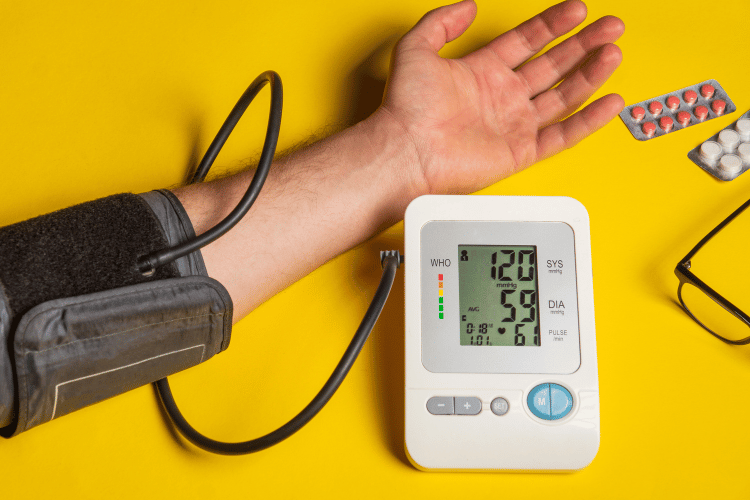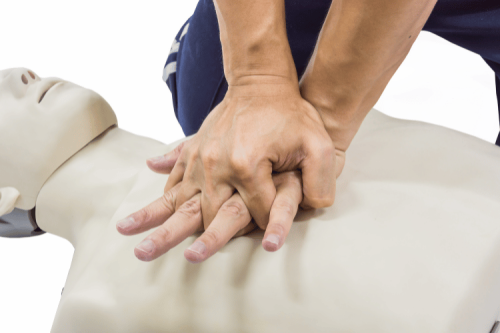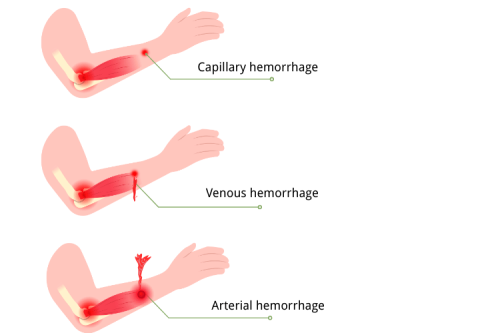
Blood pressure is a vital indicator of cardiovascular health, yet many people don’t fully understand how age and gender influence what’s considered normal, or dangerously high. While most know that high blood pressure (hypertension) is a serious condition, the specific thresholds and risk factors can vary significantly depending on demographics.
For healthcare providers and individuals monitoring their health, understanding these variations is crucial. A one-size-fits-all approach doesn’t apply when it comes to blood pressure, as what’s healthy for a 25-year-old woman may differ from that of a 60-year-old man.
Let’s break down the blood pressure chart by age and gender, explore how hypertension risks evolve, and discuss why early detection and management are essential for long-term health.
Understanding Blood Pressure Readings
Blood pressure is a vital indicator of health, frequently measured to assess overall cardiovascular function. While a simple reading might appear as two numbers on a screen, it conveys essential information about how forcefully blood moves through the arteries and the pressure exerted on these vessels. Understanding blood pressure readings is crucial for recognizing potential health risks and managing conditions like hypertension or hypotension. The following sections outline the basics of blood pressure, its components, and what constitutes a healthy blood pressure range.

Understanding Blood Pressure Readings
What is a Blood Pressure Reading?
Blood pressure readings measure the force of blood against artery walls as the heart pumps. Expressed as two numbers in millimeters of mercury (mmHg), these readings consist of systolic pressure over diastolic pressure (e.g., 120/80 mmHg). Blood pressure varies throughout the day and can be influenced by physical activity, stress, medication, or underlying health conditions. Regular monitoring is vital for maintaining heart and vessel health.
Components of Blood Pressure: Systolic and Diastolic
The two primary components of a blood pressure reading are:
- Systolic Pressure
-
- This represents the pressure exerted when the heart contracts, pumping blood into the arteries.
- It is the top number in a blood pressure reading.
- Diastolic Pressure
-
- This captures the pressure in arteries when the heart relaxes between beats.
- It is the bottom number in a blood pressure reading.
Both values provide insight into cardiovascular function, with systolic highlighting peak pressure and diastolic reflecting resting pressure.
Normal Blood Pressure Ranges
|
Category |
Systolic (mmHg) |
Diastolic (mmHg) |
|---|---|---|
|
Normal |
<120 |
and <80 |
|
Elevated |
120-129 |
and <80 |
|
Hypertension Stage 1 |
130-139 |
or 80-89 |
|
Hypertension Stage 2 |
≥140 |
or ≥90 |
|
Hypertensive Crisis |
>180 |
and/or >120 |
However, these ranges don’t account for age or sex differences, factors that significantly influence cardiovascular risk.
High Blood Pressure Overview
High blood pressure, also known as hypertension, is a critical health condition that often progresses without noticeable symptoms but carries significant risks to cardiovascular health. Monitoring and understanding high blood pressure is essential, as it can lead to serious complications such as heart disease, stroke, and kidney problems. The following sections provide a detailed analysis of what constitutes high blood pressure, its categories, and associated health implications.
Defining High Blood Pressure
High blood pressure occurs when the force of blood pushing against the artery walls consistently exceeds normal levels. Expressed in millimeters of mercury (mmHg), it includes two key measurements:
- Systolic Pressure (the first/top number): Measures the pressure as the heart beats and pumps blood.
- Diastolic Pressure (the second/bottom number): Measures the pressure when the heart rests between beats.
A persistent elevation in either or both values can result in a high blood pressure diagnosis.
Blood Pressure Categories: Elevated to Hypertensive Crisis
Blood pressure levels are categorized to simplify risk assessment:
- Normal: Systolic below 120 mmHg and diastolic below 80 mmHg.
- Elevated: Systolic between 120-129 mmHg with diastolic still under 80 mmHg.
- Stage 1 Hypertension: Systolic between 130-139 mmHg or diastolic between 80-89 mmHg.
- Stage 2 Hypertension: Systolic of 140 mmHg or higher, or diastolic of 90 mmHg or higher.
- Hypertensive Crisis (emergency care required): Systolic above 180 mmHg and/or diastolic above 120 mmHg.
Each category reflects an increasing need for intervention to manage cardiovascular risk.
Stage 1 and Stage 2 High Blood Pressure
- Stage 1 Hypertension
Early-stage high blood pressure often requires lifestyle changes, including diet and physical activity adjustments, to prevent progression.
- Stage 2 Hypertension
This stage typically requires a combination of lifestyle modifications and medication to control blood pressure and mitigate associated health risks effectively.
Regular blood pressure monitoring and professional medical guidance remain vital tools in managing hypertension at all levels.
Blood Pressure by Age and Gender
Blood pressure is a critical factor in monitoring overall health. It tends to vary significantly based on age and gender. Understanding these differences can provide valuable insight into maintaining ideal blood pressure levels and preventing potential health problems. The sections below examine the normal ranges for various age groups, the impact of gender on blood pressure, and an analysis of these variations across different population groups.

Blood Pressure by Age and Gender
Normal Blood Pressure by Age
Blood pressure typically changes as individuals age. Here are the general guidelines for different age groups:
- Children (1-12 years)
Normal ranges are between 90/60 mmHg and 110/70 mmHg. Physical development affects these numbers.
- Adolescents (13-19 years)
A range of 110/70 mmHg to 120/80 mmHg is considered healthy due to significant growth and hormonal changes.
- Adults (20-59 years)
Blood pressure should remain below 120/80 mmHg for optimal cardiovascular health.
- Seniors (60+ years)
Slightly higher readings, such as 130/80 mmHg, are acceptable due to changes in vascular elasticity.
Age-specific monitoring enables the early detection of abnormalities and facilitates targeted interventions.
Variations in Blood Pressure Readings by Gender
Gender influences blood pressure trends due to hormonal differences and lifestyle factors:
- Women
Women tend to have lower readings than men before menopause, influenced by the protective effects of estrogen. Postmenopause, the risk of hypertension increases significantly.
- Men
Men exhibit higher blood pressure readings than women during early adulthood, partially due to higher levels of visceral fat and lifestyle risks.
Recognizing these patterns ensures tailored medical oversight.
Analysis of Blood Pressure Numbers Across Age Groups
- Adolescents and Young Adults
High readings in this group often indicate unhealthy habits, such as poor dietary choices.
- Middle Age
This period marks an increase in hypertension cases resulting from cumulative lifestyle effects. Addressing these issues early can limit vascular damage.
- Seniors
Elevated values often indicate age-related changes in the vascular system. Managing these levels with regular checkups and medication can enhance longevity.
By proactively examining blood pressure in conjunction with age and gender, individuals and healthcare providers can better maintain cardiovascular health.
Controlling Your Blood Pressure
Maintaining optimal blood pressure is crucial for promoting long-term cardiovascular health and preventing complications such as heart disease or stroke. Effective blood pressure management requires a mix of lifestyle adjustments, consistent tracking, and professional medical guidance when necessary. The sections below outline practical strategies, methods for home monitoring, and key indicators for when to consult a healthcare provider.
Strategies for Maintaining Healthy Blood Pressure
- Adopt a Balanced Diet
Focus on nutrient-rich foods such as fruits, vegetables, whole grains, and lean proteins. Limit sodium intake to less than 2,300 mg daily, as excess salt can raise blood pressure.
- Engage in Regular Physical Activity
Incorporate at least 150 minutes of moderate exercise weekly, such as walking, swimming, or cycling, to strengthen your cardiovascular system.
- Maintain a Healthy Weight
Losing even a small amount of weight can help reduce blood pressure. Aim for a body mass index (BMI) in a healthy range.
- Limit Alcohol and Quit Smoking
Excessive alcohol and smoking contribute significantly to elevated blood pressure. Alcohol intake should be moderate, and smoking cessation is critical.
- Manage Stress
Relaxation techniques, such as meditation or yoga, can help lower stress levels, which may aid in controlling hypertension.
Monitoring Blood Pressure at Home
Home monitoring is a key tool for managing blood pressure. Steps include:
- Choose a Reliable Device
Select an FDA-approved, appropriately sized cuff for accurate readings.
- Take Measurements at the Same Time Daily
Preferably measure in the morning, before medications, and under similar conditions to maintain consistency.
- Maintain Proper Posture
Sit upright with your back supported, feet flat on the floor, and the cuff placed on a bare arm at heart level.
- Log Your Results
Record readings to track changes and share these with your healthcare provider during check-ups.
When to Seek Medical Advice
Consult a healthcare professional if you observe any of the following:
- Consistently high readings, such as systolic higher than 130 mmHg or diastolic above 80 mmHg.
- Symptoms like severe headaches, vision problems, chest pain, or shortness of breath.
- Blood pressure exceeding 180/120 mmHg (hypertensive crisis), which necessitates immediate medical attention.
Regular check-ups are essential for tailoring a plan to manage blood pressure effectively. An informed approach and proactive efforts can significantly reduce health risks.
Frequently Asked Questions
What is a blood pressure chart, and how do I use it?
A blood pressure chart is a tool that helps individuals track their blood pressure readings over time. It typically includes ranges for systolic pressure (the top number) and diastolic pressure (the bottom number), allowing users to see if their blood pressure is in a normal range, elevated, or classified as high blood pressure stage 1 or stage 2. To use the chart, regularly measure your blood pressure at home and record the results, comparing them to the chart to understand your blood pressure levels.
What do the two numbers in blood pressure readings mean?
The two numbers in a blood pressure reading represent systolic pressure and diastolic pressure. Systolic pressure, or the top number, measures the force of blood against the artery walls when the heart beats. Diastolic pressure, or the bottom number, measures this pressure when the heart is at rest between beats. Both values are expressed in millimeters of mercury (mmHg) and are crucial for diagnosing high blood pressure and evaluating cardiovascular health.
How can I effectively manage high blood pressure?
Managing high blood pressure involves lifestyle changes such as adopting a healthy diet, engaging in regular physical activity, reducing sodium intake, and maintaining a healthy weight. Additionally, regular blood pressure checks are crucial for monitoring your levels. If lifestyle changes alone are insufficient, your healthcare professional may recommend medications to help keep your blood pressure in a healthy range and reduce the risk of serious health problems like heart disease.
What are the stages of high blood pressure?
High blood pressure is categorized into stages. High blood pressure stage 1 is defined as a systolic pressure of 130-139 mm Hg or a diastolic pressure of 80-89 mm Hg. Stage 2 high blood pressure is more severe, characterized by readings of 140/90 mmHg or higher. Understanding these stages is essential for effective diagnosis and management of hypertension to prevent complications such as heart attack and stroke.
What is considered low blood pressure, and what are its symptoms?
Low blood pressure, also known as hypotension, is generally defined as a reading below 90/60 mm Hg. Symptoms may include dizziness, fainting, fatigue, and lack of concentration. While low blood pressure can be normal for some individuals, it can also indicate underlying health problems, especially if accompanied by other symptoms. If diagnosed with low blood pressure, it’s essential to consult a healthcare professional for further evaluation.
How does elevated blood pressure affect my arteries?
Elevated blood pressure puts extra strain on the arteries, which can lead to damage over time. This increased force of blood can cause arteries to become less elastic, narrowing them and increasing the risk of heart disease and stroke. By using a blood pressure chart to monitor readings and addressing elevated blood pressure, individuals can take proactive steps to protect their cardiovascular health.
What is the difference between systolic and diastolic pressure?
Systolic pressure is the pressure in the arteries when the heart beats, while diastolic pressure is the pressure when the heart is resting between beats. The systolic number is typically higher than the diastolic number and is often referred to as the top number in a blood pressure reading. Understanding the difference between these two numbers is crucial for accurately interpreting blood pressure levels and managing hypertension.
How can I lower my blood pressure naturally?
To lower your blood pressure naturally, consider making lifestyle changes such as eating a balanced diet rich in fruits and vegetables, engaging in regular physical activity, reducing alcohol consumption, quitting smoking, and managing stress effectively. Additionally, maintaining a healthy blood pressure range may involve regular monitoring using a blood pressure chart and making adjustments based on your readings. These measures can significantly reduce the risk of heart disease and improve overall health.
The Bottom Line
Blood pressure isn’t static—it changes with age and differs between genders. While general guidelines exist, individualized care is key. Young adults should establish healthy habits early, while older adults need consistent monitoring to catch hypertension before it causes irreversible harm.
Whether you’re tracking your blood pressure or a loved one’s, understanding these variations ensures better prevention and treatment. Work with a healthcare provider to determine your ideal range and take proactive steps to maintain a healthy heart for years to come.








 Login with Google
Login with Google Login with Facebook
Login with Facebook